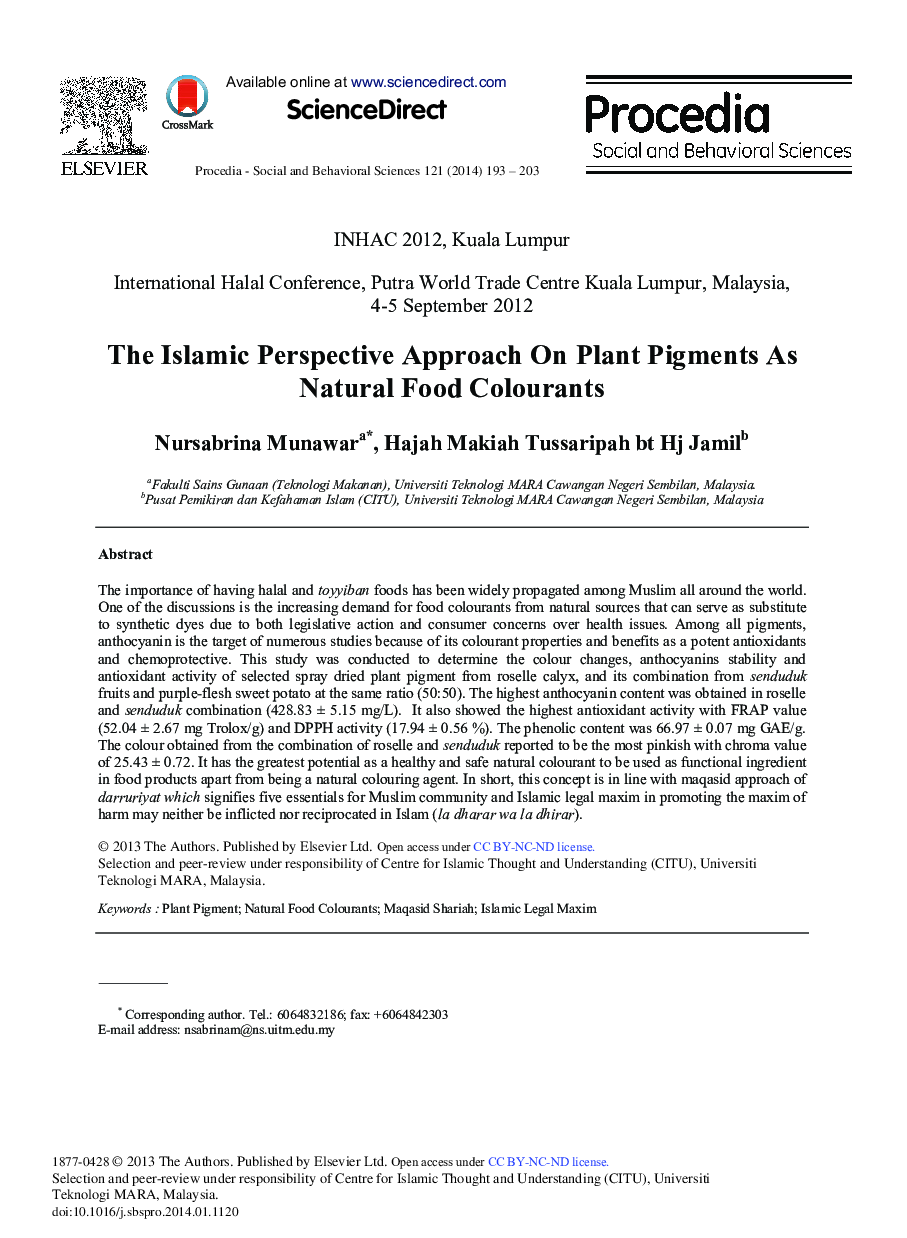| کد مقاله | کد نشریه | سال انتشار | مقاله انگلیسی | نسخه تمام متن |
|---|---|---|---|---|
| 1116478 | 1488438 | 2014 | 11 صفحه PDF | دانلود رایگان |

The importance of having halal and toyyiban foods has been widely propagated among Muslim all around the world. One of the discussions is the increasing demand for food colourants from natural sources that can serve as substitute to synthetic dyes due to both legislative action and consumer concerns over health issues. Among all pigments, anthocyanin is the target of numerous studies because of its colourant properties and benefits as a potent antioxidants and chemoprotective. This study was conducted to determine the colour changes, anthocyanins stability and antioxidant activity of selected spray dried plant pigment from roselle calyx, and its combination from senduduk fruits and purple-flesh sweet potato at the same ratio (50:50). The highest anthocyanin content was obtained in roselle and senduduk combination (428.83 ± 5.15 mg/L). It also showed the highest antioxidant activity with FRAP value (52.04 ± 2.67 mg Trolox/g) and DPPH activity (17.94 ± 0.56%). The phenolic content was 66.97 ± 0.07 mg GAE/g. The colour obtained from the combination of roselle and senduduk reported to be the most pinkish with chroma value of 25.43 ± 0.72. It has the greatest potential as a healthy and safe natural colourant to be used as functional ingredient in food products apart from being a natural colouring agent. In short, this concept is in line with maqasid approach of darruriyat which signifies five essentials for Muslim community and Islamic legal maxim in promoting the maxim of harm may neither be inflicted nor reciprocated in Islam (la dharar wa la dhirar).
Journal: Procedia - Social and Behavioral Sciences - Volume 121, 19 March 2014, Pages 193-203